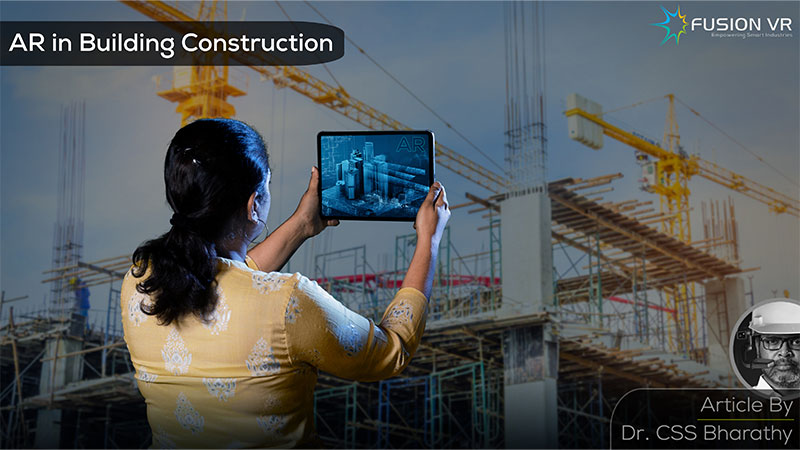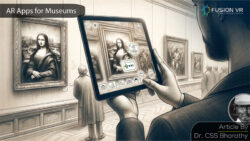Building Construction is undoubtedly a tough profession, particularly for those who have to brave the sun and rain. While heavy machinery and equipment have mechanised many operations, it is still a demanding place to work. Computers and technology have brought in many advantages as well, but there are more technological solutions on hand to make this job a bit more easier. The construction site is also a high-risk workplace with thousands of accidents and injuries each year. Projects racing against time to complete also add an undue amount of pressure on everyone involved. Things done under such circumstances lead to injuries, quality issues, schedule overruns and a loss of morale. That could become a big headache for the bosses, for sure.
Fortunately, we have technologies today that can alleviate all those problems, enable empowerment of the workforce and deliver greater productivity, quality and customer satisfaction. One of the coolest and most accessible technologies is Augmented Reality or AR. All you need is a simple smartphone to begin using this technology. This is something most of us have at almost all times with us. What AR does is overlay essential, useful and really cool stuff on what you see through the lens of your camera. That reality is “augmented” or enhanced. The overlaid stuff is completely digital, and it could just share more information on what you are seeing. Take, for example, during a tour of an apartment construction site, it could describe something that you’re already seeing or indicate something that is expected to come there. That kind of augmentation is interactive and enriches the overall experience of the user. There are many more applications for the construction process and depending on the use cases being identified.
Construction sites engage many engineers who need to ensure that buildings are constructed as per the design and engineering drawings.
Errors result in rework, unnecessary costs, and safety and reputational issues. They need to verify with drawings and documents and interpret the progress accurately in real-time. However, mistakes do happen and AR technology can help prevent those issues or detect them early enough so that they get properly addressed early on. Currently, there are many uses for augmented reality for construction projects. For example, Gamma AR is a commercially available augmented reality construction app that is being used for construction site monitoring, inspections, tracking and reporting progress. Information on what is happening on the construction site is accurately and quickly made available to everyone who needs it or is interested in it.
Applications of Augmented Reality in Building Construction
Applications such as these integrate BIM (Building Information Modeling) systems to help engineers visualise upcoming construction, enable preparatory works to be initiated and flag potential problems and conflicts that could be resolved ahead of time. The efficiency of the construction effort is improved dramatically,, helping to save time and money. Construction managers need to consider AR seriously and integrate its use into their construction management processes.
Augmented reality in building construction helps MEP engineers effectively perform project planning and schedule the work ahead. Using custom-developed applications, engineers use AR goggles to visualise the layout of HVAC systems from BIM models before it is laid out. They engage their teams to walk down the scope to be completed and familiarise themselves with all the construction sequences to be followed. This virtual rehearsal will help reduce errors, and material waste and improve productivity. The same application can be used to provide task-by-task guidance and obtain remote expert support when needed. Electrical, plumbing and interior fit-out activities will benefit from similar applications of Augmented Reality. Companies investing in AR are guaranteed to save labour and machinery costs in any project.
One of the most focused areas in the construction industry and a constant source of worry is construction safety. In general, construction activity creates several hazards that need to be eliminated or mitigated through the use of safe work practices. Hand injuries, falling objects, slips, trips, electric shocks, dust exposure, and work-at-height hazards are quite common. While better site layout helps, the responsibility for ensuring personal safety lies squarely with individuals. All workers on site need to be comprehensively trained on all safe work practices, hazard recognition, mitigation and proper use of personal protective equipment (PPE). Augmented Reality solutions can be developed to provide the necessary training that is interactive, contextual and repetitive to ensure that the right safety habits get ingrained. The training is highly engaging, gamified and integrated into the company’s learning management system (LMS). Safety Trainers using such training simulators are able to review and provide feedback that improves all required competencies.
It must be quite obvious that the applications of AR technology in construction can be a game changer for companies in this business. The smart integration of such technologies and their impact on the company’s bottom line cannot be underestimated. Leaders and engineers need to take advantage of these technologies right away. Engaging the right AR technology partner to help get started is crucial. We at Fusion VR have the technical and engineering subject matter expertise along with the technological capabilities to help you make choices that are sustainable and cost-effective. Augmented reality in building construction is set to revolutionise the way buildings are constructed tomorrow and in the near future.





